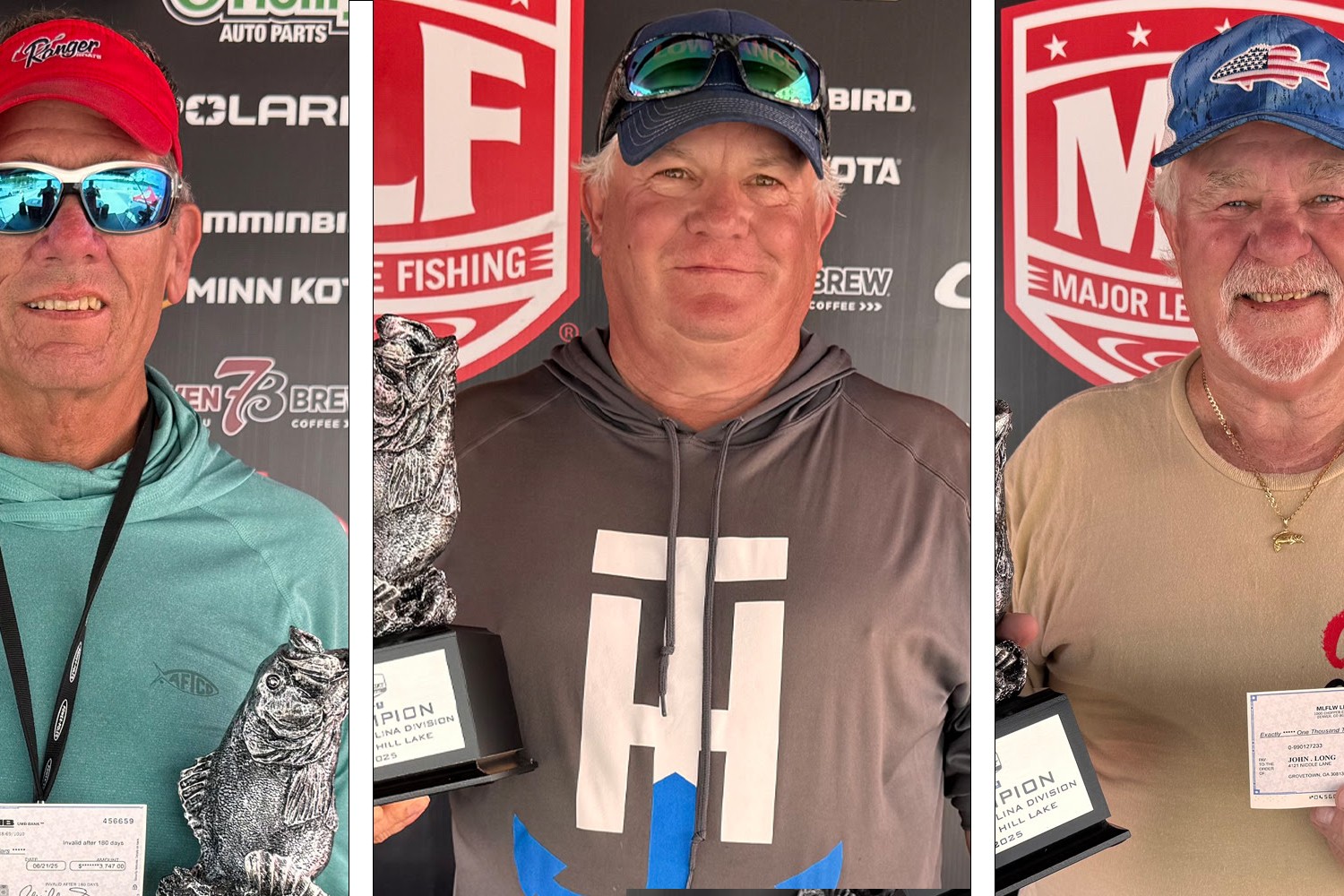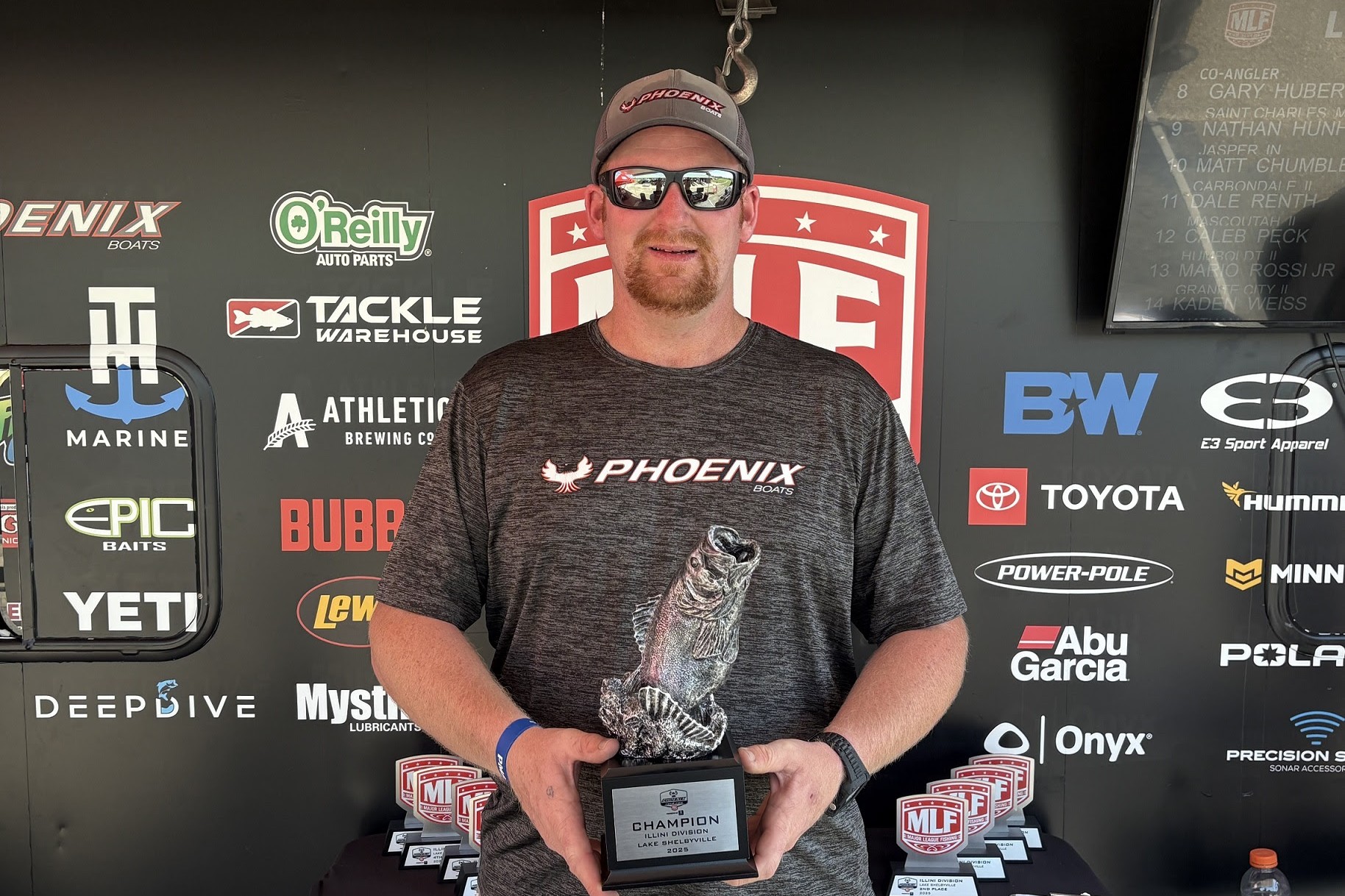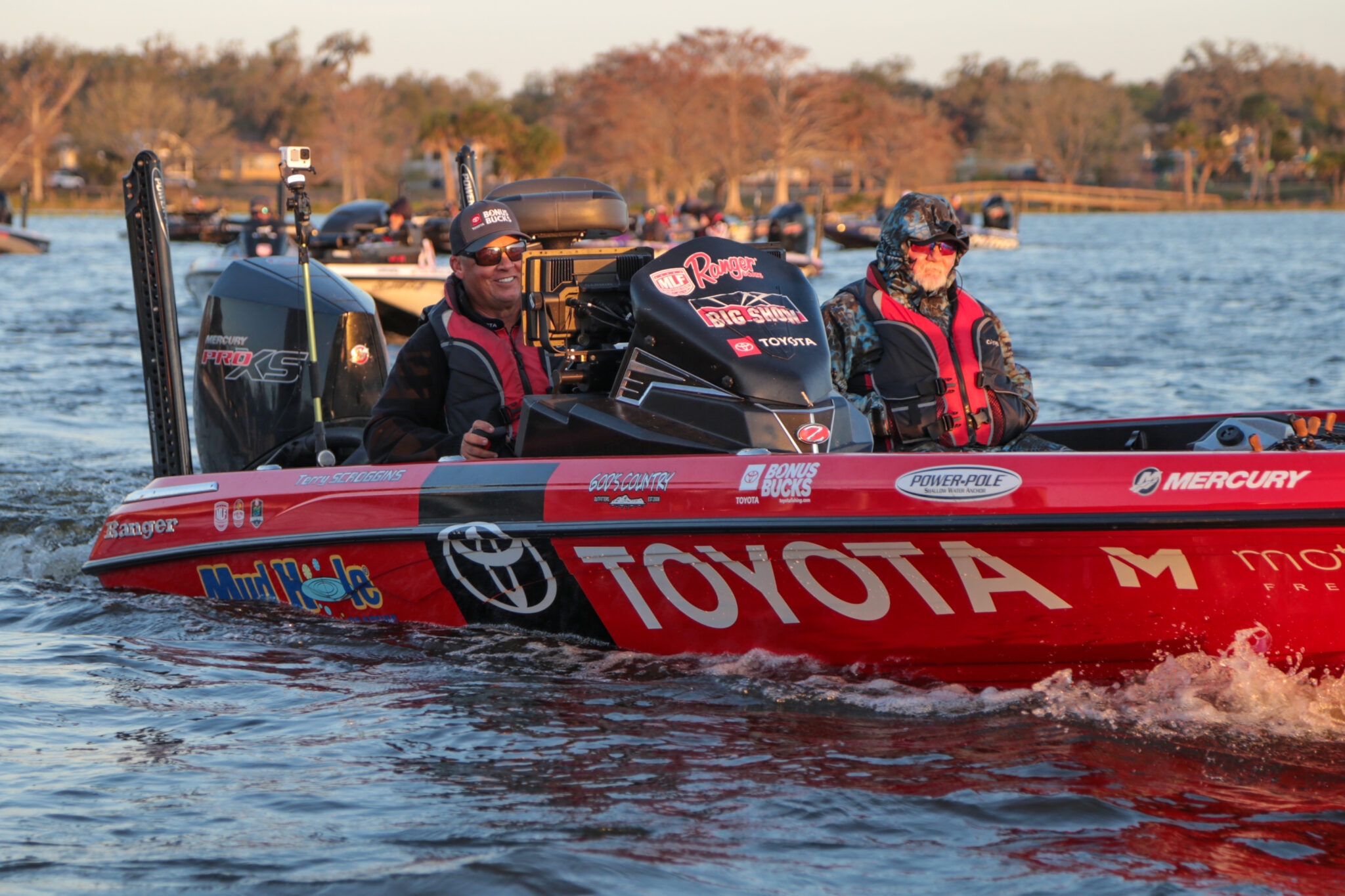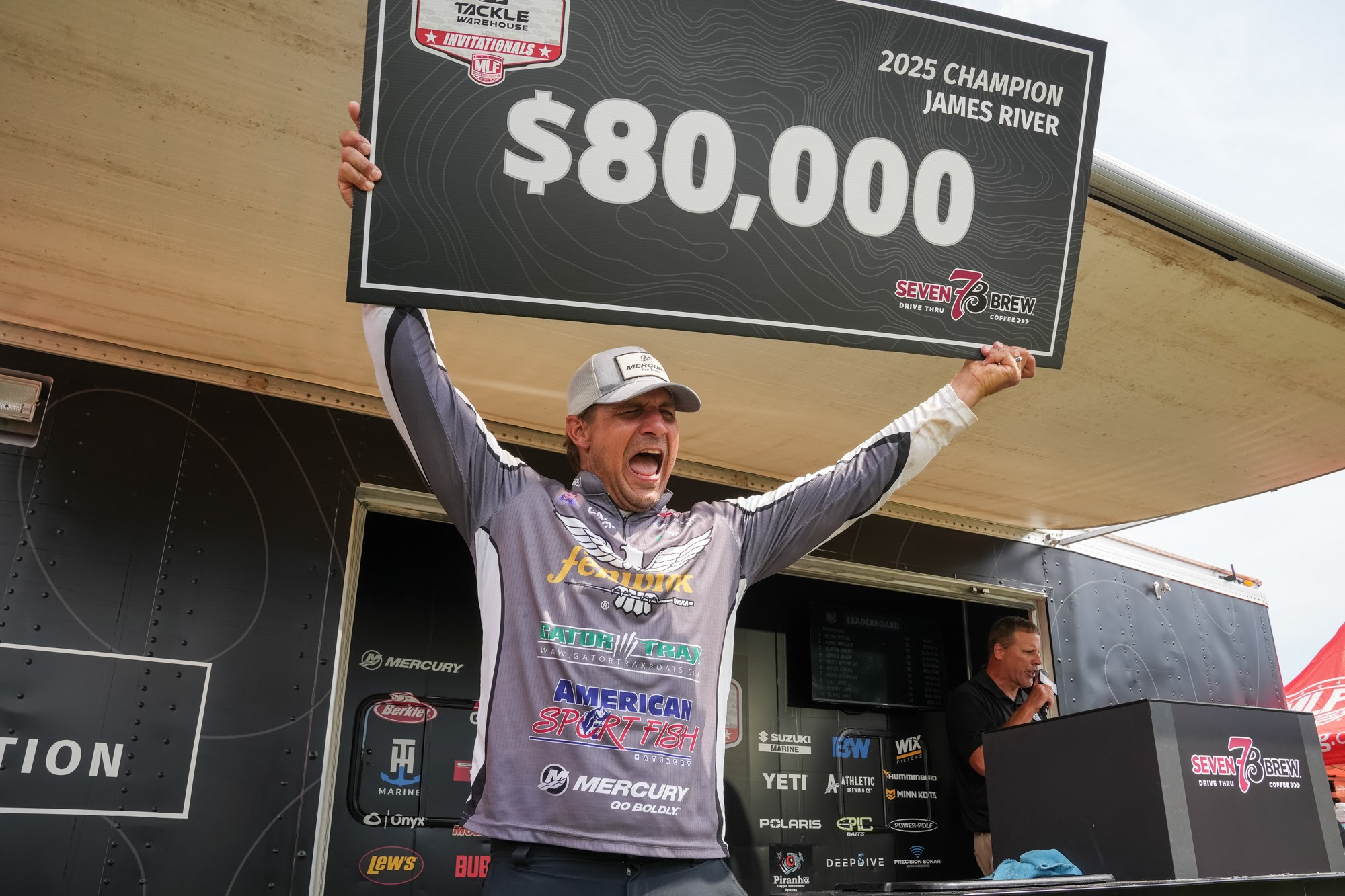Weather And Vast Habitat Key Factors For Redfish Cup Championship
The Yamaha Bassmaster Redfish Cup Championship presented by Skeeter returns to Port Aransas, Texas, Nov. 4-6. Five all-star teams will be in the field, including 2021 Redfish Cup champions Elite Series pro Chris Zaldain and IFA Redfish Tour angler Ryan Rickard.
Photo by James Overstreet/B.A.S.S.
October 27, 2022
PORT ARANSAS, Texas — Convincing Lone Star redfish to bite rarely amounts to any significant challenge, but according to local pro Kevin Akin, the competitive “high slot” reds could present a serious game of hide and seek for the 10 teams competing in the 2022 Yamaha Bassmaster Redfish Cup Championship presented by Skeeter at Port Aransas, Texas.
“Typically, redfish in our area in the fall are easy to catch, finding them is the hard part,” Akin said.
Competition days will be Nov. 4-6 with daily takeoffs from Fisherman’s Wharf at 7:05 a.m. CT on Days 1 and 2 and 6:45 a.m. on Day 3. Weigh-ins will be held each day back at the Wharf at 3 p.m.
The tournament field will feature a mix of championship-caliber professional redfish teams along with five all-star teams featuring Bassmaster pro anglers paired with redfish pros. Teams will be allowed to weigh two fish in the 20- to 28-inch slot per day. The team posting the highest three-day cumulative weight will win the $100,000 top prize.
Akin, who won the 2021 Elite Redfish Series National Championship in Port Aransas, will pair with Elite Series champion and 2019 Rookie of the Year Drew Cook. From his 35 years of local knowledge, Akin said he expects the entirety of tournament boundaries to be in play, with favorable conditions greeting competitors.
“This event could be won from Port O’Connor to Bird Island,” Akin said. “There’s not a part of this bay system that can’t produce the winning fish. Our redfish live entirely throughout the bay system.”
As with last year’s event, teams will likely disperse across the region and work a diverse array of habitat features from broad grass flats, to oyster bars, creeks and canals. Ultimately, the all-star team of Elite Series pro Chris Zaldain and IFA Redfish Tour angler Ryan Rickard won the 2021 title on the Laguna Madre grass flats, but fall’s dynamic nature could produce a completely different picture just as easily as a Zaldain-Rickard repeat.
“The majority of the time, water quality in the lagoon (Laguna Madre) is going to depend on what cold fronts we get,” Akin said. “Once a cold front blows through, it’s going to get really dirty, but it will clean up really fast because of the seagrass.
“Water temperatures this time of year are typically in that 67- to 77-degree range, depending on how brutal the cold fronts are. Typically, this time of year, we don’t get any (severe weather conditions) that drop the water temperatures quickly, so I’d say the average temperature will be over 70 for the beginning of November.”
Even if temperatures remain relatively mild, wind is the cold front’s unavoidable reality. Should a weather system arrive during tournament week, the impact could be game-changing.
“If we get a front (during tournament week), the major thing is what part of the bay systems the water blows out of and what part of the bay systems it blows into,” Akin said. “Typically, you get more wind-driven water than tide-driven water in our ecosystem.”
As Akin explains, such possibilities could force anglers to evaluate the risk/reward premise, as it relates to their chosen fishing area. Specifically, anglers fishing shallow marsh or delta habitats would likely find their areas drained by falling tide hastened by a strong outward wind.
“That’s not as critical on the southern boundary, because it’s more contained — it’s pretty much landlocked with no Gulf entrance for (approximately 90 miles),” Akin said. “Whereas it becomes pretty significant on the northern boundaries — from Port Aransas, north — where you’re dealing with more of a delta system as far as marshy backwaters and freshwater tributaries that fall into it.
“Those areas are pretty shallow to begin with, and then getting the water completely dumped out by a north wind becomes treacherous at times.”
Obviously, depth governs navigational access, but as long as anglers can float in and float out, the field remains in play. Conversely, a wind-driven water increase presents another set of considerations.
“You get two different (preferences) with redfish,” he said. “In some cases, they are where they want to be, regardless of water level, based on a certain structure or (forage); they’re just happy where they are and they’re going to stay right there where you want them to be.
“In more of a marshy area, with flow coming in, those fish will move to the flow, so they’ll push to the middle of ponds or the middle of bay systems, as opposed to staying on the edges where most redfish anglers target them.”
Akin knows significant water increases can negatively impact an area — but not always.
“If you find fish that are where they want to be, water levels do not matter,” he said. “It’s just two different kinds of fish — the ones that are happy where they are and the ones that are going to feed based on what the tide (and wind) does with them.”
No question, this game includes a strong hunting element, but wherever redfish are found, they respond well to a handful of baits. Light lead-head jigs with paddletails or shrimp imitators will see a lot of repetition, as will topwaters.
“I don’t know what it is, but redfish hate topwaters,” Akin said of the fish’s aggressive response to surface baits. “I’ve seen a redfish swim 30 feet to eat a topwater. I think sometimes they just hit it because it irritates them.”
While topwater baits will definitely yield redfish catches, the enticing/annoying presence also prompts fish to show themselves with boils, wakes and short strikes. As Akin pointed out, reds often hunker down in thick seagrass where they’ll nap in complete concealment until they rise to a topwater.
He expects some of the field to employ a proven tournament tactic in which one angler works a topwater until a redfish moves. At that point, the other angler throws a subsurface bait to the point of contact. A weedless gold, silver or copper spoon is one of the best options for this strategy, while it also serves independent search-bait duties.
Beyond these redfish standards, last year’s event saw competitors catch sizable fish on ChatterBaits, large mullet-mimicking swimbaits, lipless crankbaits and a Texas-rigged craw bait taken right out of the largemouth bass playbook. Whatever anglers choose to throw, locating targets will be job No. 1.
There’s a lot of water, but the redfish could be anywhere.
Fans can catch Bassmaster Redfish LIVE coverage all three days of the tournament on Bassmaster.com. FS1 will broadcast live Nov. 5-6 beginning at 7 a.m.


















